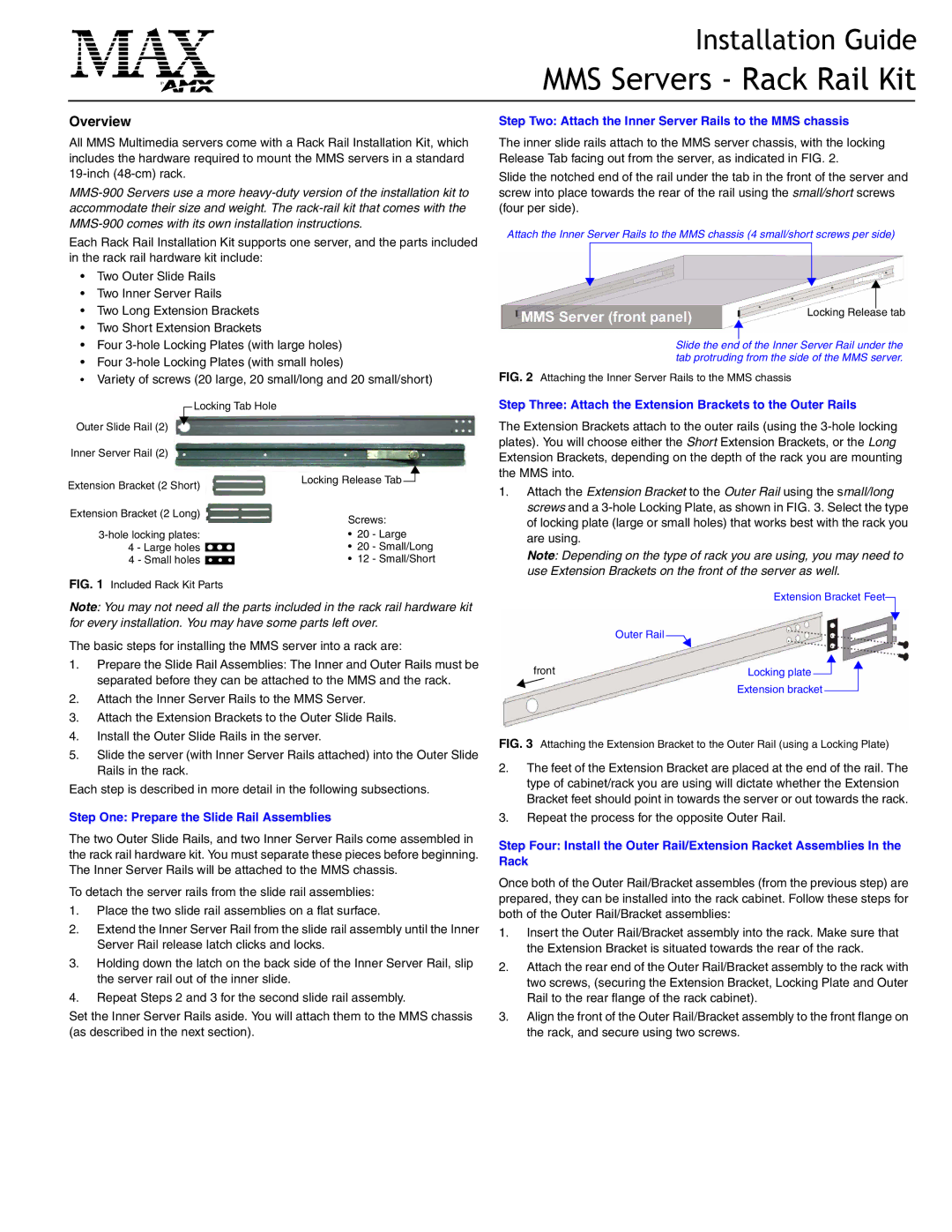MMS Servers specifications
AMX MMS (Media Management Server) is an essential technology for managing multimedia content within various audiovisual systems. Designed to optimize the delivery and distribution of media, AMX MMS servers serve as robust platforms for organizations looking to enhance their communication, collaboration, and content-sharing capabilities.One of the key features of AMX MMS servers is their capability to handle a wide array of media types, including video, audio, and images. This versatility allows users to manage everything from simple presentation materials to complex broadcast-quality video. The server ensures high-quality media playback, providing a seamless user experience across various platforms, including desktop, mobile, and web-based applications.
Another significant characteristic of AMX MMS servers is their scalability. As organizations grow and their media demands increase, the MMS servers can be easily scaled to accommodate additional users and content without compromising performance. This flexibility makes them suitable for small businesses to large enterprises, ensuring that all user requirements can be met effectively.
AMX MMS servers also leverage advanced streaming technologies. They support multiple streaming protocols, ensuring reliable and efficient delivery of content, even in bandwidth-constrained environments. Features such as adaptive bitrate streaming further enhance user experience, as the server automatically adjusts the quality of the media being delivered based on the user's connection speed.
Additionally, the integration capabilities of AMX MMS servers play a vital role in their functionality. They can easily connect with various content creation tools, digital asset management systems, and AV control systems. This integration enhances collaboration, allowing users to streamline the content creation and distribution process.
Security is also a top priority for AMX MMS servers. They implement robust authentication measures and encryption protocols to protect sensitive media content. This ensures that only authorized users can access specific media files, maintaining confidentiality and compliance with organizational policies.
In conclusion, AMX MMS servers are a powerful solution for effective media management and distribution. Their key features, including support for diverse media types, scalability, advanced streaming technologies, integration capabilities, and strong security measures make them a valuable asset for any organization looking to leverage multimedia for communication and collaboration. With a focus on delivering high-quality content seamlessly, AMX MMS servers stand out as a leading choice in media management technology.

